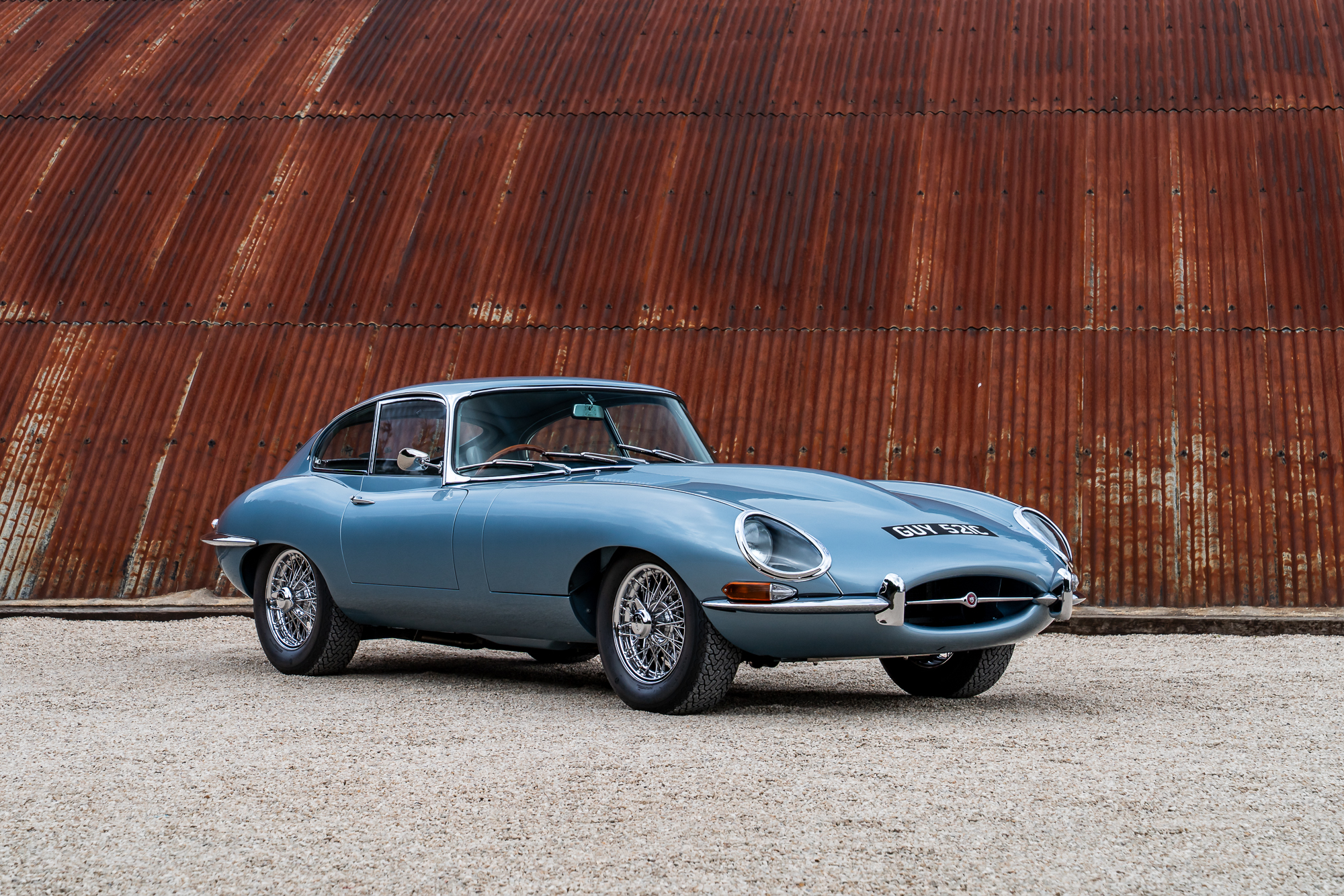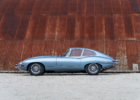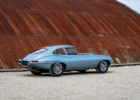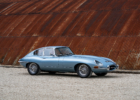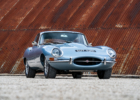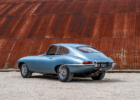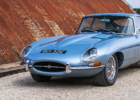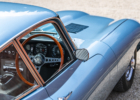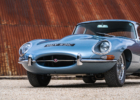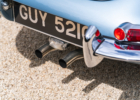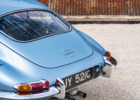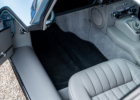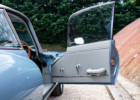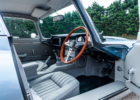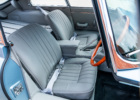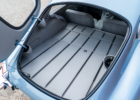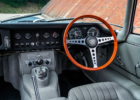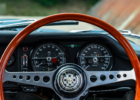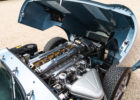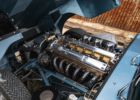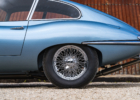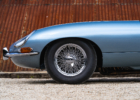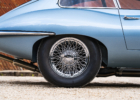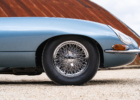1965 Jaguar E-Type Series 1 FHC
- Original matching-numbers, UK-market car
- Full five-year restoration completed in December 2012
- Less than 5,000 miles since restoration
- Performance upgrades for improved handling and reliability
| YEAR | 1965 |
| MAKE | Jaguar |
| PRICE | £139,995 |
VEHICLE DESCRIPTION
This superbly restored Jaguar E-type Series 1 has been subtly upgraded to ensure that the driving experience matches its looks, making it a versatile and extremely usable example of this landmark British sports car.
Chassis number 1E 20674 was built on 4 May 1965 and finished in Silver Blue with a grey interior. The car was originally supplied via the Rothwell & Milbourne dealership in Malvern, and first registered on 1 June 1965.
By the 1980s, the E-type had moved to the north of England and was acquired in 1982 by John Stock in North Shields. Having been partially restored, it then passed to Darlington-based specialist Simon Robinson in 1988. Robinson completed the final assembly before selling it in October that year to a Mr Percy in Gosforth.
In 1992, the Jaguar was again sold via Simon Robinson, this time to Ian Murray in County Durham. Six years later, it was bought by an Oxfordshire-based enthusiast and was once again in need of restoration. A comprehensive nut-and-bolt rebuild got under way in 2007 and took five years. The bodywork was restored by the Hutson Motor Company in Bradford, a process that involved fitting an entire new floor assembly, inner and outer rear wings, door shells and B-posts.
At some point, the E-type had been resprayed grey and its interior retrimmed in black, but it was decided to return the car to its original colours. The finishing touch for the exterior was a set of 6J x 15in wire wheels from PJ Hallewell Engineering.
The original 4.2-litre engine (7E 4132-9) was rebuilt and fitted with Ross Racing pistons, stronger XJ6 con-rods, and a reconditioned cylinder head. It also features a programmable 123 distributor and a large-bore Classic Fabs stainless-steel exhaust.
The cooling system has been uprated with an alloy radiator and a high-performance fan, while the braking has been improved thanks to Fosseway six-pot calipers at the front and four-pots at the rear. A new steering rack was fitted and Gaz adjustable dampers were specified all round, and a Tremec five-speed gearbox was also installed – a popular E-type upgrade that greatly improves its cruising ability. The original gearbox has been kept with the car.
The interior was retrimmed using the correct moquette seat backs and wool cloth headlining. New carpets and soundproofing were installed, as was a period-look modern stereo.
The end result is a beautifully presented Jaguar E-type Series 1 4.2 FHC that has been used only sparingly since the restoration was completed in 2012. It’s now being offered for sale with an extensive history file that includes invoices from the rebuild, pre-restoration photographs, and a Heritage Certificate from the Jaguar Daimler Heritage Trust.
MODEL HISTORY
The Jaguar E-type caused a sensation when it was launched at the 1961 Geneva Salon.
Not only did aerodynamicist Malcolm Sayer came up with one of the most beautiful automotive shapes of all time, the E-type also offered 150mph performance from its 3.8-litre straight-six engine – and all for a price that was significantly less than its rivals from Aston Martin and Ferrari.
Beneath the skin, the E-type owed much to the Le Mans-winning D-type, and used a monocoque centre section with a subframe carrying the engine and front suspension. At the rear, independent suspension was fitted at a time when many of Jaguar’s rivals still employed a traditional live axle, and disc brakes were used all round.
In October 1964, the E-type received an updated 4.2-litre engine. Also developed for use in the Mark X saloon, the bigger ‘six’ provided a boost in torque – up from 261 to 283lb ft.
At the same time, the old Moss gearbox was replaced by a new all-synchromesh, four-speed Jaguar unit, and more comfortable seats were installed, plus improved electrics and a new brake servo. Two body styles were initially offered – a roadster and a fixed-head coupé – and a 2+2 model was added to the range in 1966.
When Motor Sport magazine tested a 4.2 E-type, editor Bill Boddy wrote: ‘The Jaguar E-type has been one of the world’s outstanding sports cars from the day it was first announced … In its latest form it is very near perfection.’
Motor magazine, meanwhile, said that the new model ‘creates its own unique position among the world’s most desirable cars with a combination of performance, handling, looks and refinement that is still unequalled at the price’.
